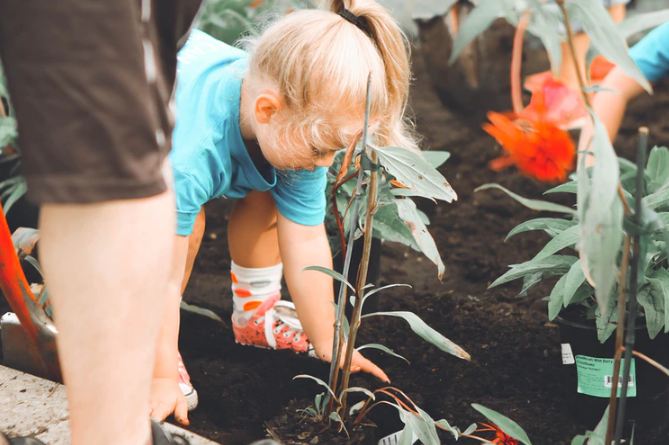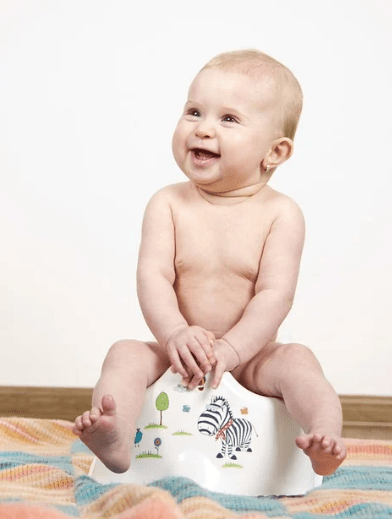Helping Your Child Take the Lead in Pet Care: Tips and Tricks
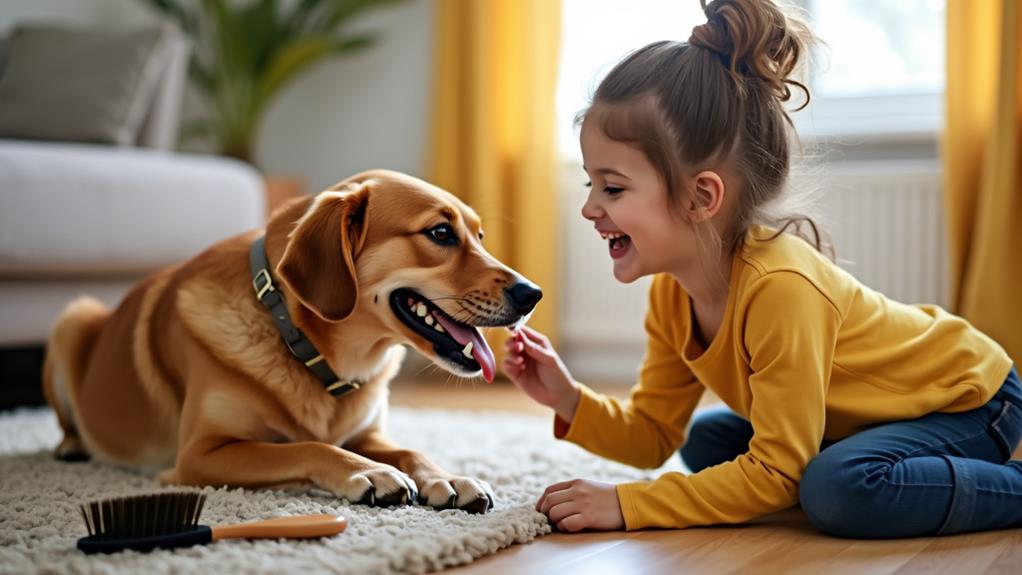
Helping your child take the lead in pet care not only fosters responsibility but also nurtures empathy and strengthens the bond between them and their pet. By involving them in pet training and assigning exercise duties, you can instill a sense of duty and promote healthy habits. But how can you make pet care enjoyable and educational? Here are some practical tips to turn everyday tasks into engaging, family-friendly activities. Ready to learn more?
Involve Kids in Pet Training
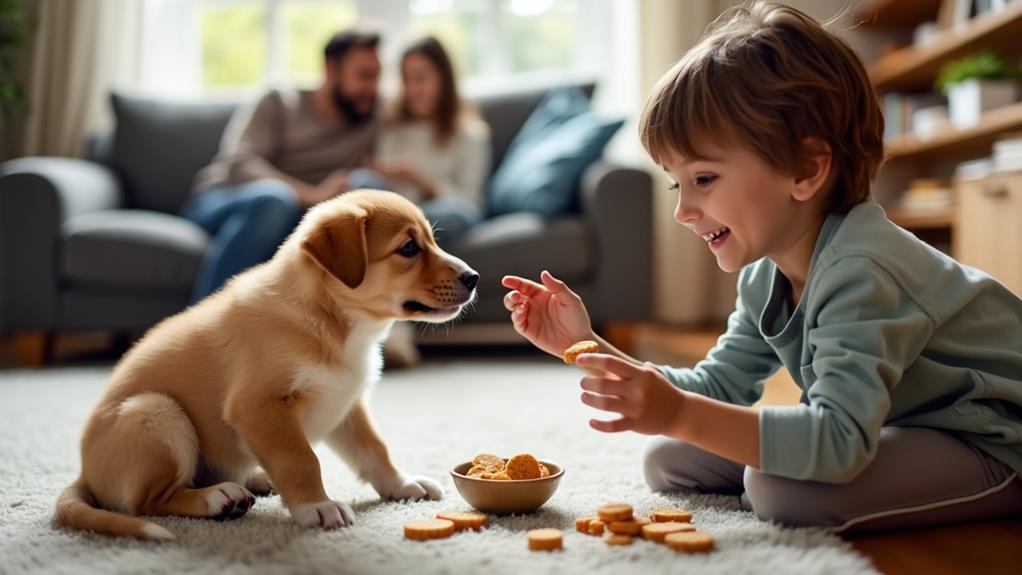
Engaging kids in pet training can greatly enhance their confidence and sense of responsibility while also deepening the bond with their furry friends. When children actively participate in pet care, both the pet and the child benefit. They can start by teaching simple tricks like high-fives or rolling over, which entertain and mentally stimulate the pet, making training sessions enjoyable and rewarding for both parties.
Involving your child in tasks such as introducing pets to grooming tools is another excellent way to teach essential pet care skills. Through this, children learn the importance of patience and consistency, qualities valuable in various life aspects. Fun games like hide and seek or the cup game can be seamlessly integrated into training sessions, promoting playful learning and further strengthening the pet-child relationship.
Empowering your child to take the lead in pet training fosters emotional growth and enhances their ability to communicate effectively with animals. This experience boosts their empathy and understanding, creating a nurturing environment for both the child and the pet. Encouraging your child to take the reins in pet care is a win-win for everyone.
Encourage Moderation With Treats
When rewarding pets, it's essential to practice moderation with treats to ensure their health and well-being. Teaching children about the appropriate quantity of treats not only helps maintain the pet's health but also instills a sense of responsibility. Understanding that excessive treats can lead to health issues makes kids more mindful of their choices.
Encourage children to explore alternative motivators, such as toys or praise. Different pets respond to various types of motivation, and discovering these can be an engaging and educational activity for kids. This approach fosters creativity and helps children understand their pets' needs and emotional responses better.
Using non-treat methods can strengthen the bond between children and their pets. Knowing that pets can be motivated by their favorite toy or kind words enhances the training experience and promotes empathy. It teaches kids that positive reinforcement doesn't always require a treat.
Ultimately, teaching children to use moderation with treats and finding other ways to reward pets will lead to a healthier, happier relationship for both.
Assign Pet Exercise Duties

Assigning pet exercise duties to children not only promotes the pet's health but also instills a sense of responsibility in the young caregivers. By taking charge of the pet's exercise routine, children learn the importance of consistency and physical activity. They can choose walking or running routes, turning a mundane task into an adventure. Exploring different paths keeps the pet engaged and helps children become more familiar with their surroundings.
Establishing a regular exercise schedule is essential. Consistency benefits the pet's well-being and teaches children the value of commitment. This approach ensures both the child and the pet get the exercise they need. Activities like going to the park can be doubly beneficial, enhancing the pet's physical health and strengthening the bond between the child and their furry friend.
Before heading out, always check the accessibility of parks and the safety of walking areas. This ensures a positive and enjoyable experience for both your child and the pet. By assigning these duties, you create a win-win situation for everyone involved.
Establish Pet Chill Time
Creating designated chill time for your pet is crucial for their relaxation and mental well-being. Encourage your child to help establish these routines by setting up cozy, safe spaces where pets can retreat from household activity. This helps your pet feel secure and reduces their stress levels.
Importance of Relaxation
Quiet time is essential for both pets and their human families, reducing stress and anxiety in animals and promoting better health and behavior. Children can play a significant role in incorporating relaxation routines, helping pets feel secure and comfortable. It's important to teach kids to recognize when their furry friends need a break from the hustle and bustle.
Constant family presence can overstimulate pets, leading to behavioral issues. Establishing relaxation periods allows them to recharge. Here's a simple way to visualize chill time for different pets:
| Activity | Pet |
|---|---|
| Reading quietly | Dogs, Cats |
| Gentle petting | Dogs, Cats |
| Providing hiding spots | Cats |
| Designated quiet area | All pets |
Engaging in calm activities, like reading to pets, fosters a deeper bond between children and animals while promoting relaxation for both. By creating these peaceful moments, children participate in a crucial aspect of pet care. Encourage your kids to be mindful of these quiet times, ensuring pets can relax and feel secure. This benefits the pets and teaches children empathy and responsibility.
Creating Safe Spaces
Creating a safe space for your pet is essential for their emotional well-being and overall happiness. Pets need quiet moments away from the daily hustle and bustle to alleviate stress and anxiety. Involving your children in this process teaches them empathy and responsibility while ensuring pets have a cozy retreat.
Children can help by:
- Setting up a pet bed: Encourage kids to select a soft, comfortable bed and place it in a quiet corner of your home.
- Designating quiet zones: Teach them to identify areas away from high-traffic parts of the home for the pet's relaxation.
- Reading to pets: During calm times, let children read to pets to foster a sense of security and teach gentleness.
These routines help pets recharge, improving their mood and behavior during active interactions. Supervision is crucial, so ensure children understand the importance of allowing pets their quiet time. This mutual respect promotes a harmonious environment where both pets and children can thrive.
Teach Responsible Pet Care
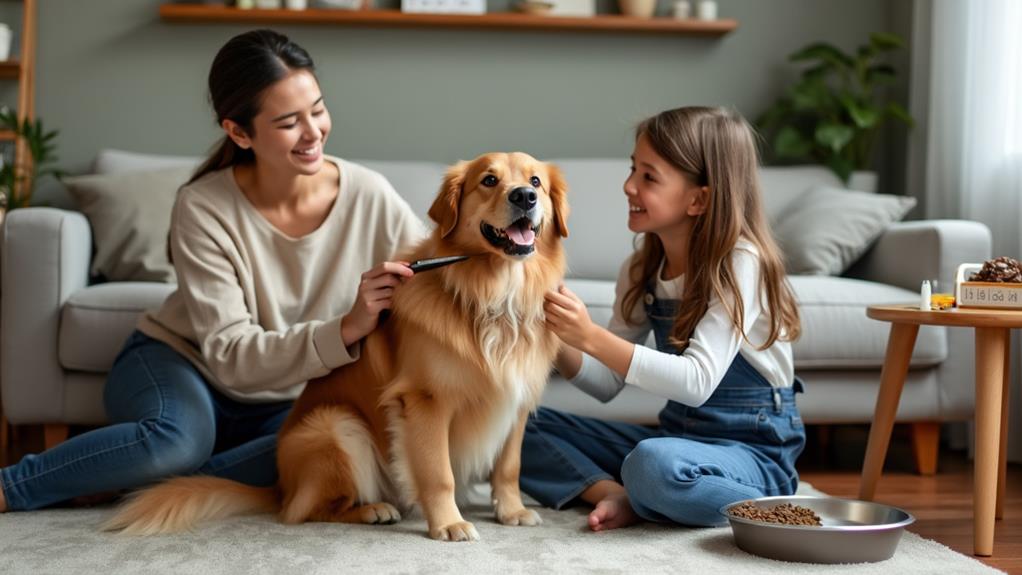
Teaching children responsible pet care involves encouraging gentle interactions and modeling proper behavior. Show them how to handle pets softly and calmly, emphasizing the importance of kindness. By demonstrating patience and consistency, children learn to care for their pets responsibly and form lasting bonds.
Promote Gentle Interactions
To foster a respectful and loving relationship between children and pets, it is essential to promote gentle interactions from the start. Teaching children to approach pets calmly and allowing animals to initiate interactions helps create a sense of comfort and safety for both parties. Demonstrate proper petting techniques and encourage children to be mindful of the pet's body language and comfort levels.
By discussing pets as living beings with emotions, rather than toys, children can better understand the importance of personal space and quiet times, especially during meals or rest. This approach not only reduces the risk of dog bites but also enhances children's social skills and empathy towards animals.
Key Guidelines:
- Teach children to approach pets calmly and allow animals to initiate interactions.
- Emphasize gentle handling by demonstrating proper petting techniques.
- Reinforce the need for pets' personal space and quiet times.
Setting clear guidelines, such as prohibiting rough play and implementing time-outs for inappropriate behaviors, is crucial. This helps children understand the consequences of their actions and fosters a safer environment. Encouraging empathy towards pets by discussing their feelings and needs also improves children's emotional intelligence and respect for all animals.
Model Proper Behaviors
A key aspect of teaching children responsible pet care is to model proper behaviors consistently. When interacting with your dog, always allow the dog to approach first. This helps your child understand that pets need to feel comfortable and trustful during interactions. Show respect for your pet's private time, especially during meals or rest periods. Explain to your child that, just like humans, dogs need space and quiet at times.
Demonstrate proper petting techniques by emphasizing calmness and gentleness. Let your child see how you softly stroke the dog, helping them realize that overstimulation can cause stress or anxiety in pets. Use comparisons between interacting with pets and people to help your child grasp that pets have emotions too. Mention how, just as they wouldn't like rough play, neither do dogs.
Implement clear consequences for inappropriate treatment of pets. If your child engages in rough play, a time-out can effectively reinforce the connection between their actions and the pet's well-being. By consistently modeling these behaviors, you'll help your child learn to care for their dog responsibly, fostering a harmonious relationship built on mutual respect and understanding.
Promote Gentle Interactions
Fostering gentle interactions between children and pets is crucial for building trust and comfort. To promote these interactions, teach your child to approach pets calmly and let the animals initiate contact. This helps pets feel secure and less threatened, increasing their likelihood of warming up to your child.
Emphasize the importance of gentle petting techniques by using soft strokes and slow movements to avoid overstimulating or scaring the pet. Demonstrate the appropriate way to handle pets, showing your child how to be gentle and respectful.
Here are some practical tips to help:
- Respect personal space: Encourage your child to respect the pet's personal space, especially during meals or rest times, to maintain a peaceful environment.
- Model behavior: Show by example how to play gently with pets. Avoid roughhousing to prevent any aggressive responses from the animal.
- Set boundaries: Clearly define acceptable behaviors and establish consequences for rough or abusive actions to help your child understand the impact of their behavior on the pet's well-being.
Make Pet Care Fun

Transforming pet care into a fun and engaging activity can keep children interested and invested in their responsibilities. For young children, incorporating games like obstacle courses can promote both physical health and mental stimulation for them and their pets. This not only makes pet care enjoyable but also fosters a strong bond between children and their pets.
Consider creative play, such as scavenger hunts for treats, to keep children excited about their pet care tasks. This approach turns routine activities into adventures, ensuring that your child looks forward to these responsibilities. Moreover, using interactive activities during playtime can greatly improve your pet's well-being and encourage positive behaviors.
Make pet care a shared family experience by organizing fun events. Pet-themed parties or group pet training sessions can encourage teamwork and responsibility. By making these activities a family affair, you emphasize the importance of consistency and reliability in pet care routines.
Here's a quick reference table to get you started:
| Activity | Benefits for Pets | Benefits for Children |
|---|---|---|
| Obstacle Courses | Physical health, mental stimulation | Physical activity, problem-solving |
| Scavenger Hunts | Mental enrichment, bonding | Adventure, engagement in pet care |
| Pet-Themed Parties | Socialization, fun | Teamwork, sense of responsibility |


